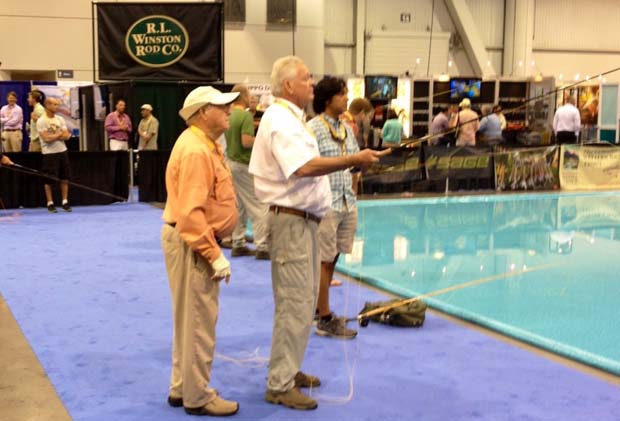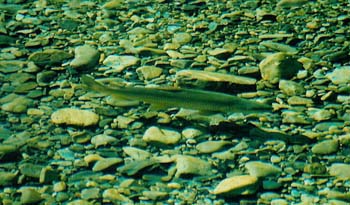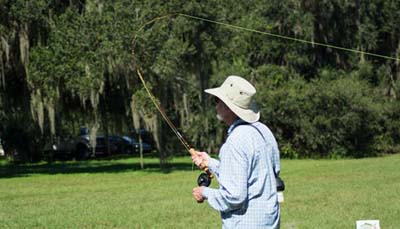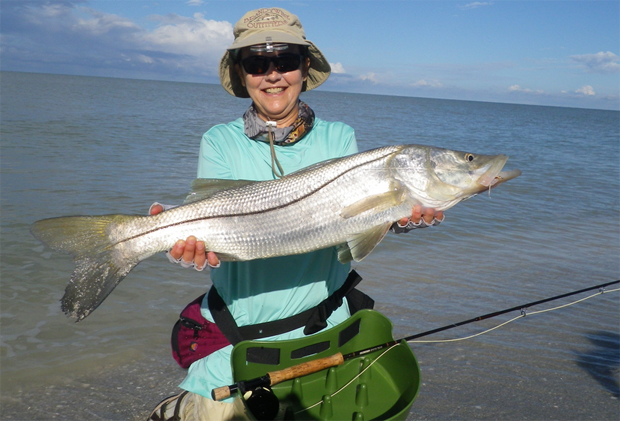About fly rods – is it a touch of heresy to say it’s fly lines that are Alpha in the cast? A New Zealand lesson. And why you should stop wiggling
[dropcap]M[/dropcap]ecca for us touchy feely fly fishing guys and gals is ICAST/IFTD Show which has been annually held in Orlando, Florida – as it was a few weeks ago. On hand were enough fly rods to keep me in line at either of two casting ponds for both days I was there.
My discoveries were limited. My enjoyment, unlimited
While waiting my turn at the show’s casting ponds, I got to watch fishable casts; the ones that were long ago imprinted into the silky folds – error-riddled; newcomer casters being coached by FFF types, and they were way beyond the ‘fishable casts’ guy by day two, and I got to see the self-infatuated show their stuff – hitting the ponds furthest point and looking for applause.
None of that was remarkable in any way except nosy me had to ask a dozen or so casters, those who fell into the aforementioned categories, what helped them cast better? One, a certain brand rod? Two, the fly line? Three, the leader? Or was it the fact that the fly had no hook? The answers were the remarkable part of my being nosy. Only one person got it right, and he worked for Scientific Angler, and of course, chose the fly line … the only correct answer. He did not want his name used – think Orvis.
The only discovery I made was actually a rediscovery; if you’re having fundamental casting issues, it’s not the rod. It is you
NOTE: However, it does follow that a particular rod design (versus another) will better aid the delivery of Cadillac bumper size flies and that a certain rod build (versus another) will better aid a #28 dry fly’s ripple less landing. Furthering fly rod importance – does it make casting the line easier? That does not change the relativity of rod to fly line, but a good fly rod is impactful. A well-made rod, usually expensive, will not only look better in a bathing suit, it will probably last a lifetime of game-ons.
If, however, you cling to the belief that the demo rods you picked up at the show and cast poorly at the pond were flawed, think again. You’re probably in denial – trapped indefinitely as a victim of repetitive behavior. It’s you, not the rod.
Lefty Kreh was right, it is you, not the rod

Lefty Kreh at the casting pool, 2013 ICAST/IFTD Show in Las Vegas. Image credit Driftwood Outdoors.com.
Lefty said, and I paraphrase, “ . . . it is hard to find a bad fly rod.” He was referring there to current, modern day fly rods. That was certainly true at ICAST/IFTD, the world’s largest gathering of anglers and displayed angling products.
At the show, there were several hundred fly rods in attendance – all the majors, many smaller rod building companies, as well as, niche rod builders.
Skilled fly casters were abundant at the casting ponds with most coaching their team’s preferred anthem to would-be shop owners and individual buyers. Some instructor types even went out of their way to help beginners – that was encouraging.
A fly line proves, irrevocably, it is the Alpha in casting
One day, years ago, while fly fishing at a lodge New Zealand’s North Island, the sheep station manager asked if I wanted to fish some water that had not been fished in five years. What do you think I said?
He added it was a long haul and there was no guarantee of good fishing, plus he had a few things to do while up there (up was the clue I missed). We drove (up) bumpily for about an hour (still on the sheep station property) and walked up the rest of the way – almost two hours. It taxed mightily as it was steep and almost trailless – just deer and elk trails in switch-back formation.
The day’s mountain fishing a day to remember

A cruising North Island brown in 6- to 7-feet deep water. Yes, that is correct. This fish looks suspended in New Zealand’s ultra gin clear water. Watch your step!
Double digit browns were common, the biggest of course got away, and rainbows were upwards of 5-pounds. The majority of the deep, fast running stream was no wider that a single lane highway. It had minor falls that spilled into slow running pools – swirling eddies and rock formations. Most pools twice the width of the stream and up to about 50-yards long. In water, access was both easy and difficult, but always deep. And in gin clear water depth mistakes were common. Ooops, not 4-feet, 7-feet!
Learning the hard way is a good way, and permanently affixes in the memory bank
After an hour of fishing, I snapped the 5-weight rod’s top section midway between the tip-top and the joining ferrule, and at the second from the top section’s ferrule where it joined the third section. I had muscled it through some brush and the rod ended up parallel to my body when I fell. SNAP – the rod was shot.
My guide, industrious like all Kiwi’s and Down Under folks said: “Not a problem mate, we can make do.” He cut the rod down to the top guide in the second section, put some tape on the rough edge, picked up the rod and began casting with a shortened leader – same fly. Five shots and fish on. He handed the rod to me, a big bow. He headed back to the truck for a new rod and instructions to meet downstream at a big waterfall – about an hour away for me.
What my guide showed me was something never forgotten. It is the fly line that is the alpha in casting

Loading the rod – casting a fly line. Photo credit Guy Harvey Fishermen.com.
That new sub-half length rod managed only to compliment the fly line’s job of delivery. In about twenty minutes I was accurate, able to get out to 30-feet, and hand set the hook using the fly line, then feeding the line back on the reel. I landed each animal by holding the fly line in my off hand and dehooking with my right (rod on ground). The rod and reel had become incidental to trout fishing.
A rod Guru will have different imperatives to put through their intellectual grinder … telling us it’s the rod that is Alpha, but the result will always be the same. Add the right line to any rod and you will get good results … assuming you can cast well.
A final note about your next fly rod and the folly of wiggling
‘Wiggling’ a fly rod to determine its ‘action’ is only done by idiots, as a matter of fact, it is an idiot’s signature. I know because I come from that clownish caste but learned a better way … as aforementioned. But we are talking about editing a rod in a fly shop.
Doling out a few hundred bucks on the basis of a few wiggles is a ridiculous way to determine anything about how a fly rod might behave in the ‘game.’
Here is how you can get a good ‘indication’ of how a fly rod will behave if stuck in a fly shop
Hold the handle in your dominant hand. Grab the rod just above the handle with your off-hand. Press and anchor the rod between your hips and pivot, quickly, about a quarter turn. Do that a half dozen times at different twist speeds and you will see where the bend is in the rod (action), feel the recovery, and get a sense of whether it ‘feels’ good to you. I would not pop for an $800 rod doing that, but it would tell me ‘not’ to consider popping for THAT $800 rod.
NOTE: Featured Image by TOTI.com.







